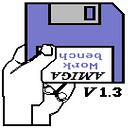It’s Kind of Cheesy
Being Green
Apple is petty sometimes
A few months ago my friend Edd Dumbill shared a discovery. He pointed out that if you search Twitter for the words “green bubbles” you’ll find very consistent results. People hate green bubbles. Example:
[The two tweets I embedded here to validate my thesis were deleted some time ago. But they were incredibly thesis-affirming.]
I’ve been performing that same Twitter search every few days and there’s usually someone new complaining. The modern world is against green bubbles.
[This tweet also really trashed green bubbles. You just have to take my word for it, until the Internet Archive’s secret Twitter archive is unveiled.]
What those tweets are referring to is how iPhones deal with text messages. When an iPhone texts an iPhone (comin’ through the rye) via Apple’s iMessage service, the outgoing text appears in calm blue. Like this:
But when an iPhone texts with a non-iPhone, the outgoing messages appears with a vibrant—some might say harsh—green background.
Judging by the hatred on Twitter this anti-green bubble phenomenon is shared broadly by all kinds of people.
[Oh yeah, three tweets in the fountain, all destroyed. What a shame.]
This spontaneous anti-green-bubble brigade is an interesting example of how sometimes very subtle product decisions in technology influence the way culture works. Apple uses a soothing, on-brand blue for messages in its own texting platform, and a green akin to that of the Android robot logo for people texting from outside its ecosystem (as people have pointed out on Twitter, iPhone texts were default green in days before iMessage—but it was shaded and more pleasant to the eye; somewhere along the line things got flat and mean).
There are all sorts of reasons for them to use different colors. (iMessage texts are seen as data, not charged on a per-text basis, and so the different colors allow people to register how much a given conversation will cost—useful!) However, one result of that decision is that a goofy class war is playing out over digital bubble colors. Their decision has observable social consequences.
Oh God, What Is “Product”?
I should probably pause and define product management, because many people who are reading this will only have a vague sense of what it means. And worse, “product” is a hard word to define. It has a specific meaning in Silicon Valley and Seattle, whereas on the East Coast of the United States it’s usually sort of lumped in with design. (I have no idea how people see “product” in other digital corridors in Mumbai, London, Paris, Toronto, or Beijing; please enlighten me in the comments.)
Wikipedia, normally my first resort, has one of its weird crowdsourced definitions: Product management is an organizational lifecycle function within a company dealing with the planning, forecasting, and production, or marketing of a product or products at all stages of the product lifecycle. Oof. Here’s what you get when you image search “organizational lifecycle function.”
So that’s a nightmare. Luckily, last year, Ellen Chisa wrote up a pretty good history of product management for the Association for Computing Machinery’s Queue. She cites one definition of the job as “a role that involved designing user interfaces, writing functional specs, coordinating teams, and serving as the customer advocate.” Okay! That’s useful. I mean you need to know what user interfaces, functional specs, and customer advocacy are, but trust me, those are mostly-real things delivered by mostly-real people.
Okay, so that’s how a product manager spends her time. But what does that actually get you?
Let me use an example that is very close to home. You know Medium.com, the publishing platform where you’re reading these words? You know Genius.com, the lyrics-and-what-have-you annotation platform? What if I told you that…Medium and Genius are basically the same website?
I mean you have to squint, but consider: Each service allows a (1) User; to post a (2) Text; and then (3) lets other Users select (4) Text Spans; and add (5) Annotations in the right-hand-column. They see text, and data, and users, in suprisingly similar ways. I think you could build a very Medium-like website on top of the technical infrastructure of Genius, and you could build a very Genius-like website using the technical infrastructure of Medium. Both are well-funded, professionally-operated organizations with big ambitions.
Take a minute to poke around both of these sites. See how different they are? How they’re designed, the audiences they seek to reach, the way they work with the larger web? All those millions of things that make them different? As similar as their data and technical architecture might be in an abstract, conceptual way, the experience of each is radically different. Those differences are the result of product management. So that’s one way to define “product,” as the observable difference between Genius and Medium.
Those are “just” complex web platforms with millions of users. With phone operating systems like Android or iOS you’re talking dozens of interlocking platforms, billions of users, giant carrier companies like Verizon and AT&T that have complex, mutually-suspicious relationships with handset makers, hardware that is constantly evolving and breaking, and software to bind it all. Manufacturing a phone is like building Rome in a day, under a microscope. Or 2.5 million Romes in a day, since at least that many smartphones are manufactured. It’s one of the most complex things we do as a culture. So the number of variables involved is immense and the amount of product work required is equally immense.
If you want to go further, look at this totally bananas 10,000-word article (also here on Medium) about the differences between the Google Maps app for iPhone and the Apple Maps app for iPhone, down to the placement of individual pixels.
Human beings had to make every single one of the decisions outlined in that article, and many more besides. The reason good product managers are insanely expensive to hire is because they are able to work across many layers of technology at once. I met one person who put transparent plastic sheets on her whiteboard so that she could flip between the layers. That’s right, nerds: three-dimensional whiteboarding.
Apple became very litigious when Google’s Android phones came out and looked like iPhones (as told in detail in the 2013 book Dogfight). It was a fight over product decisions—Google could argue that certain decisions were inevitable once you used a touchscreen, but Apple believed that they owned the way their interface worked. These decisions are very important to technology companies. They know how much they matter.
♫ Whiny Bubbles, Drawn With Splines♫
It’s pretty fair to assume that Apple knows exactly how those green bubbles are perceived. For example, look at the marketing on its website:
As pointed out in the comments by Caner Kamburoglu, here’s a section from the Apple developers’ conference where Apple makes fun of green bubbles on stage, starting at 37:27.
If I worked at Apple I’d be pretty psyched with this reaction. After all, what is a more powerful brand amplifier than social pressure? If people who converse in green bubbles start to feel relatively poor, or socially inferior, because they chose to use a less-expensive pocket supercomputer than those made by Apple, that could lead to iPhone sales. Ugly green bubbles = $$$$$ and promotions.
So the ugly green bubbles are being marketed in a mean-spirited way. Certainly it’s not a crisis in capitalism. (Fun fact: During the Byzantine empire, the supporters of the Blue chariot team often rioted against the supporters of the Green chariot team. Eventually, though, in the Nika riots of 532AD, they got angry about taxes and all rioted together and burned down the Hagia Sofia.) And this is not to say that Google is good and Apple is bad; they’re both enormous structures that have so much power that they can manufacture their own realities.
The bubbles are a subtle, little, silly thing but they are experienced by millions of people. That amplifies that product decision into a unsubtle, large, sort-of-serious thing. The people who are tweeting negatively about green bubbles are following Apple’s lead. It’s speculative, but not totally speculative to say that Apple may be aware it’s leading this way—after all, Apple has done passive-aggressive product design before, like giving Windows machines on its network a “Blue Screen of Death” icon.
I mean, why not let the people who can’t afford your products have a nice shade of green—fern or pear, pickle or pistachio, maybe even sea-foam, instead of something that looks like glow-stick at a rave? They’ll still feel poor, I promise. It’s probably one line of code to change the color, to reduce the tension between the blues and the greens, to make it possible for a broke dude stuck on Android 4.1 Jelly Bean to mack on a rich girl with an iPhone 6 without her knowing that he’s not in the same ecosystem. Why be so petty, Apple? In any case, I’m sticking with Android.

